Mississippi River Cruise
Tunica, MS
Last modified:
The advertised program for this day was: "The Mississippi Delta -- not to be confused with the Mississippi River Delta -- is a hub of agriculture, music, and history. This slice of land situated between the Mississippi and Yazoo Rivers became one of the richest cotton-growing places in America before the Civil War."
We had signed up for an added excursion: "Discover the story of a true legend at the B.B. King Museum and Delta Interpretive Center. Not unlike the crops that grow throughout the bountiful fields of the Delta, the blues arose from this fertile land. On a self-guided tour of the museum, learn the story of legendary blues artist B.B. King -- from working on a small farm to growing into an international icon. Finish the day off with a musical performance from local blues artists and southern snacks."
Oh well, it was not to be. Instead we visited Tunica, the third-largest gaming location in the US after Las Vegas & Atlantic City. It was once one of the poorest counties in the nation (it is no longer in the bottom 50) and remains dependent on casino gambling for economic sustenance. But there were other attractions.
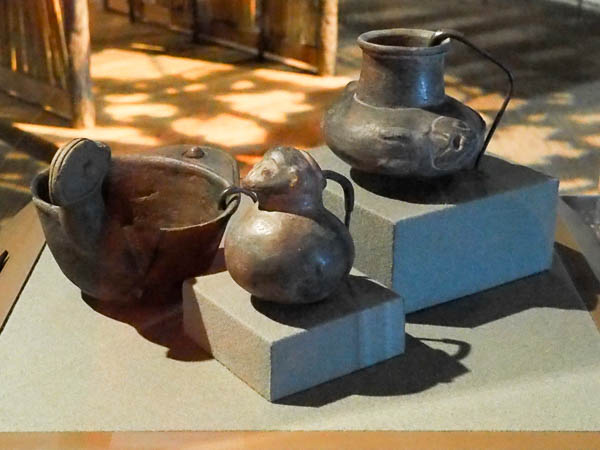
The River Park Museum was adjacent to the landing dock. I'm ashamed to admit that I was both surprised and pleased by the exhibits.
These effigy bowls were created by the Mississippian culture prominent in the Mississippi Valley in ancient times. The display materials stated that the culture's world view included "this world" where humans live, the "upper world," a place of perfection and beauty, and a "lower world" filled with chaos and despair.
Animals were associated with these worlds: birds, land animals, and fish. Especially esteemed were animals that could move between worlds, e.g., ducks (air, land and water) and amphibians (land and water).
These bowls represent a duck, an opossum, and a fish.
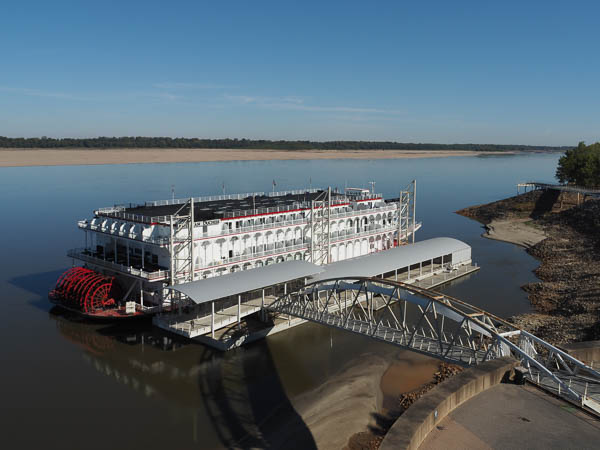
The extensive sandbar on the far side of the river shows how low it is.
The bank on our side is steeper, but it is still indicative of very low water. If it were much lower we couldn't stop here either.
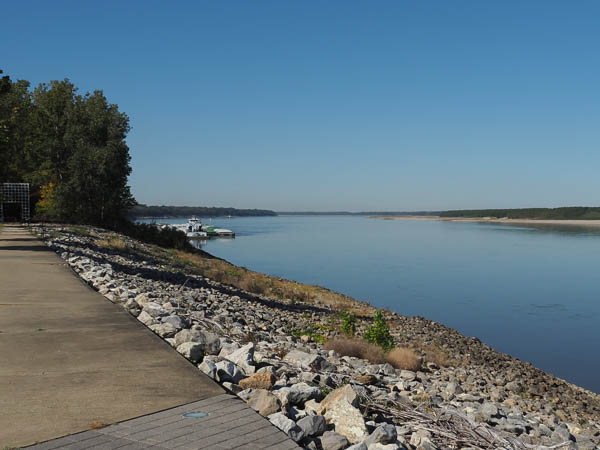
Looking downriver from the Museum, there is a tow also stalled at Tunica. It ran its engines for the full time we were both stuck as if it were ready to proceed downriver at a moment's notice.
We had been notified by the boat's crew that we were also on indefinite hold for our travel downriver.
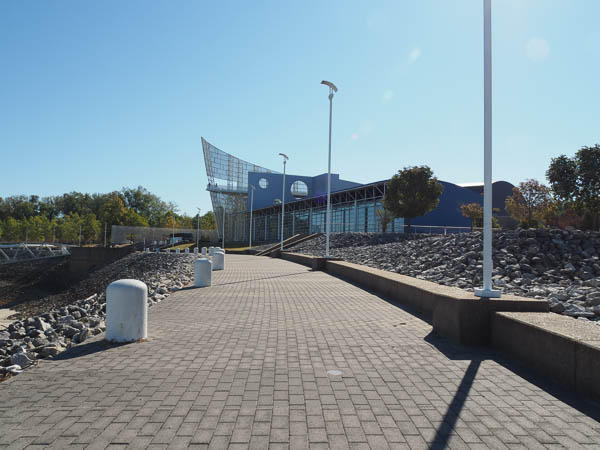
The museum hugs the river bank. There had been walking paths and trails adjacent to the park, but some of the paths were undermined and the trails were closed due to debris from an earlier storm.
I got the feeling that the trails had been closed for some time and weren't going to be reopened any time soon.
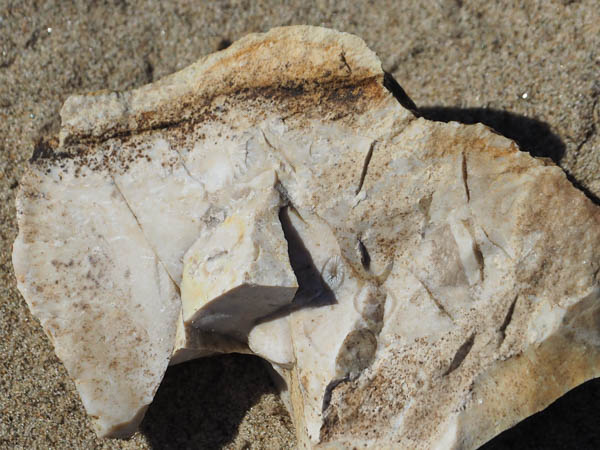
Since the trails were closed, I scrambled down to the river's edge. Low water had exposed this rock with numerous fossilized creatures. There were also many dead fish here and there.
Elsewhere entire wrecked cars were being uncovered by the falling waters.
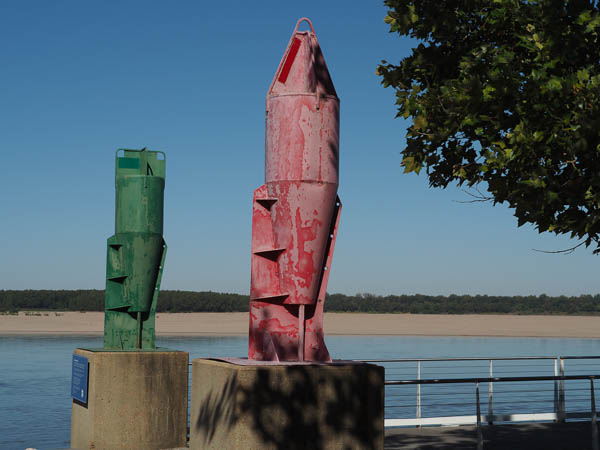
Along the park's walkway, this display illustrated the channel markers up close.
Red buoys, called "nuns," were on the left or starboard side of the boat as we cruised downstream. The green buoys are called "cans." I found an online discussion of the possible origins of "nun" as applied to channel markings.
The varying shapes would help colorblind mariners!
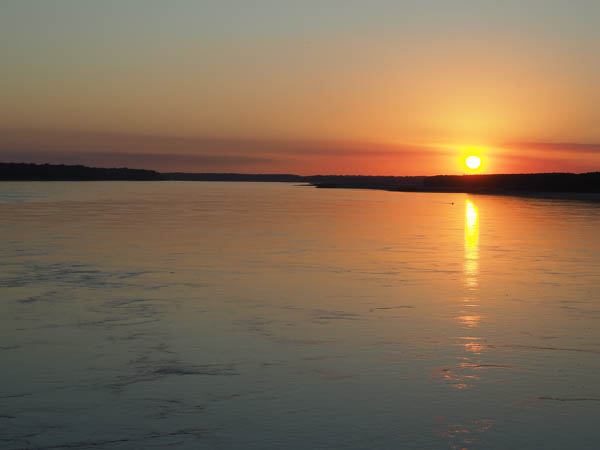
Normally river traffic would create wakes and waves making the water surface busy. Since all traffic was stopped, the river was almost glassy in the sunset.
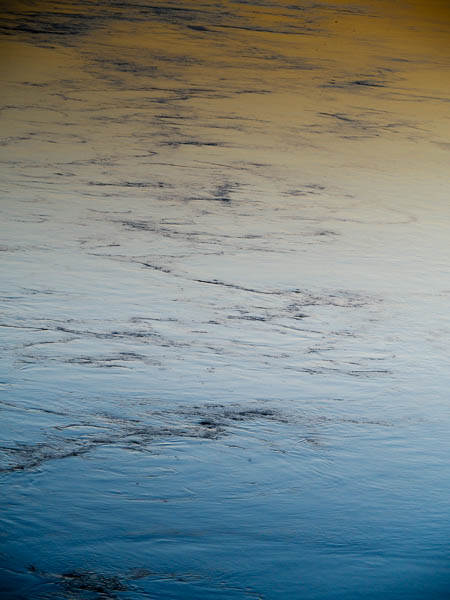
There are still eddies and boils due to the current that give texture to the water. It was fascinating to watch the small eddies writhe their way downstream.
I found one reference that states:
Boils and eddies are two dangerous water features. Boils can look deceptively calm, despite their mushroom-shaped caps that are created when deep running water is forced up. Hitting the edge of a boil can be like "driving a car onto an icy patch."
Eddies are a bigger problem. These are large whorls of water flowing against the current, frequently on bends, which create turbulence like a washing machine. One above Baton Rouge has turned entire tows around. One tow pilot says, "Boils ain't no problem, but eddies you got to watch."
As we went to sleep that night, we hoped for good news in the morning -- clearance to travel downstream.
Click your "back" button to return to the previous page or click for our picture album.